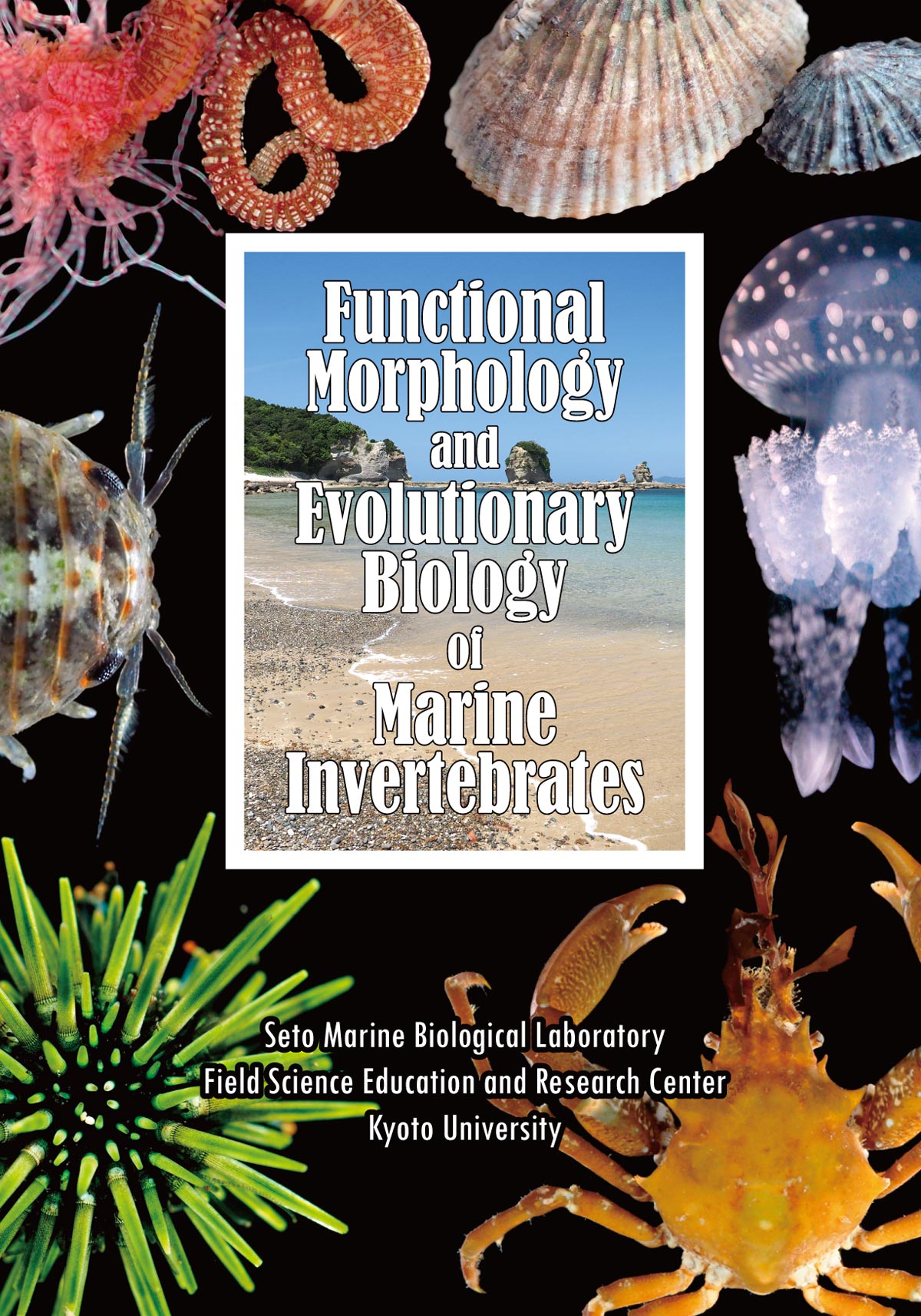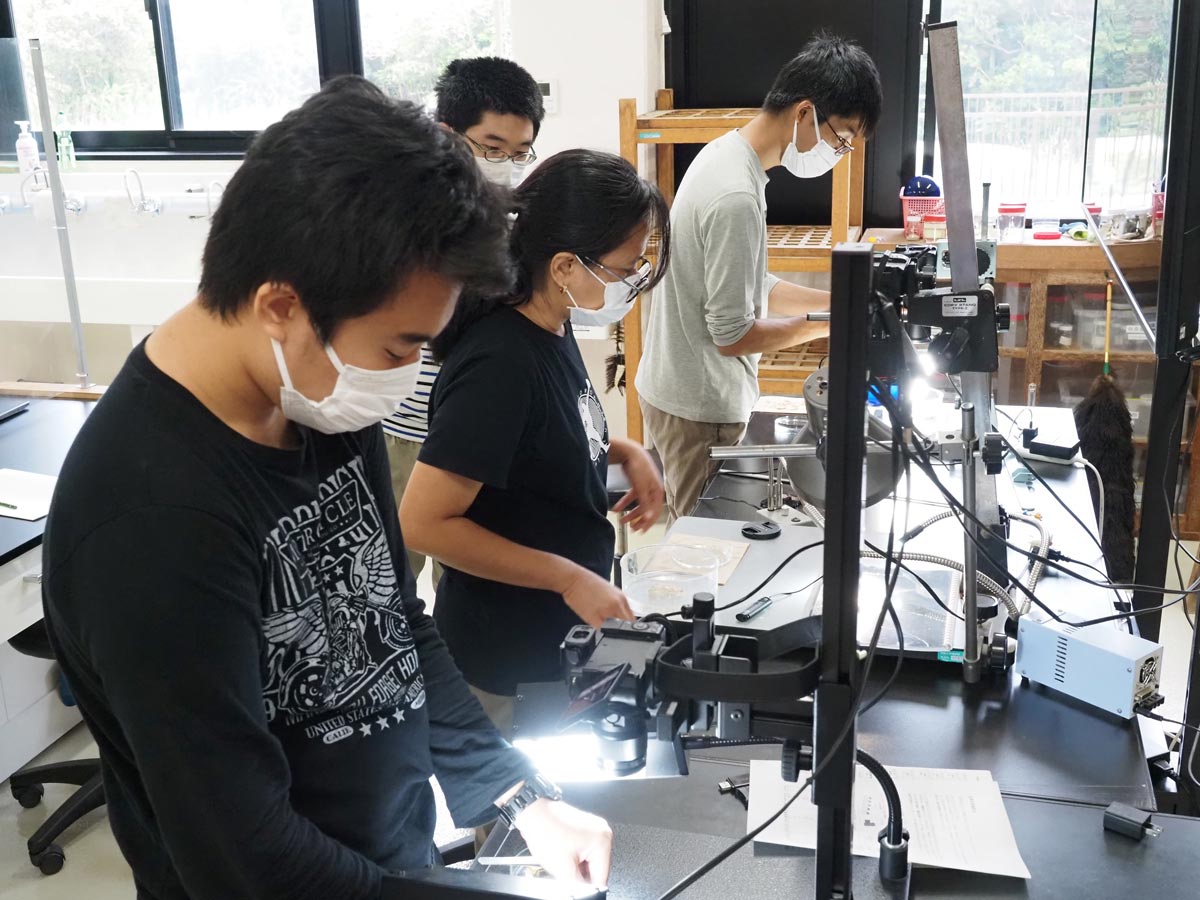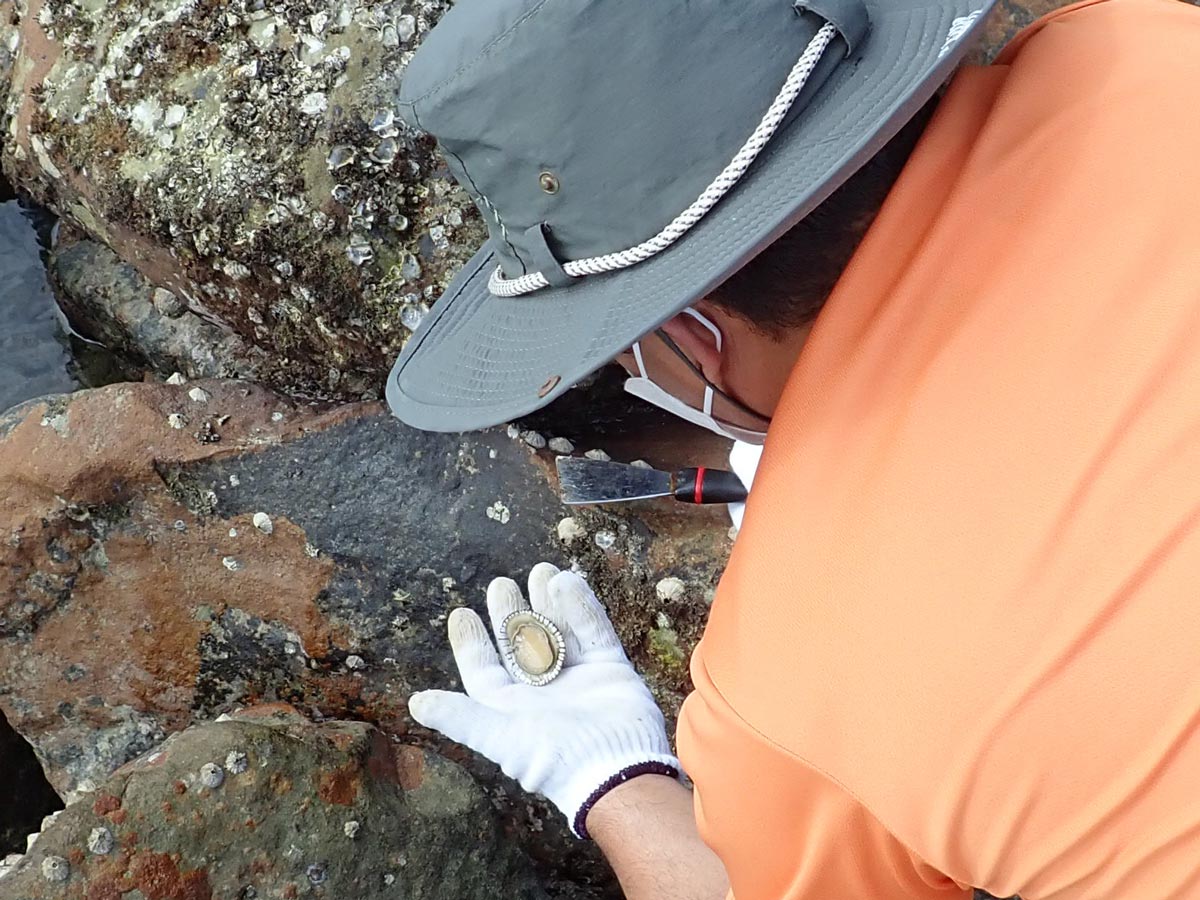Overview
Course duration
7 days: Aug 25th (Mon) 15:00 – Aug 31st (Sun) noon, 2025
Meeting place
Teaching laboratory 1, Seto Marine Biological Laboratory, Field Science Education and Research Center, Kyoto University
Instructors
SHIMOMURA, Michitaka (Professor / SMBL Director)
NAKANO, Tomoyuki (Associate Professor)
KAWAMURA, Mariko (Junior Associate Professor)
GOTO, Ryutaro (Assistant Professor)
YAMAMORI, Luna (Assistant Professor)
Eligibility for participation
Japanese and international students enrolled in universities in Japan (both undergraduate and graduate students)
All participants need to enroll in the insurance below:
- Personal Accident Insurance for Students and Researchers (Gakkensai by JEES) or an equivalent level of insurance
- Gakkensai Incidental Liability Insurance or an equivalent level of insurance
Credits
Equivalent to 2 academic credits
(Academic credit will not be officially awarded, but a certificate of completion will be issued instead)
Accommodation and meal fees
About 16,000 yen for 7 days
What to bring
(Required) Notebook, pencil for drawing (hardness B or HB or F), long-sleeved jacket and long pants (for field activity), hat or cap, towel, rain jacket, work gloves (can be borrowed at the lab)
(As necessary) laptop PC
Capacity
5 participants
Course content
Animals are classified into 30–35 phyla, most of which are so-called “invertebrates”, animals without backbones (= vertebral column). Many groups of invertebrates are aquatic, and the all members in the 14 phyla are exclusively marine. Marine invertebrates exhibit a wide range of sizes and their body plans are highly diverse.
Each body plan has been evolved in close relationships with lifestyle concerning locomotion, feeding, protection from predators, and reproduction.
The aim of this course is to learn body plans of diversified marine invertebrates by sketching and to understand and discuss relationship between the morphology and evolution or function.

Field sampling
Intertidal zones provide various habitats to invertebrates. Bansho-zaki, the rocky and boulder shore near the Seto Marine Biological Laboratory, faces the Pacific Ocean, highly influenced by the warm current Kuroshio on both marine and terrestrial climates. A variety of cnidarians, annelids, molluscs, arthropods, and echinoderms are found in tidepools and under boulders.
Comparative anatomy of crustaceans
Crustaceans (phylum Arthropoda) are highly diversified in marine environment. By dissecting hermit crabs (decapods, under water), wharf roaches (isopods, semi-terrestrial), and stalked barnacles (cirriped, sessile), we learn diversity of the metamerism (segmentation) and examine degree of specialization of appendages in each metamere in terms of their function.

Comparative anatomy of gastropods
Gastropods (phylum Mollusca) are also highly diverse and display wide range of feeding habits, such as grazing on periphytic microalgae and seaweeds, preying on bivalves, gastropods, and fishes, and filtering out and consuming planktons, depending on the taxonomic group. By dissecting intertidal gastropods, we learn how the different feeding habits relate to morphology of internal organs, such as radula.

Comparative anatomy of cnidarians
Free-living cnidarians (phylum Cnidaria) have two morphotypes: benthic polyp and planktonic medusa. For example, sea anemone and moon jellyfish exhibit morphologies suited to their lifestyles. We also learn the cnidae, which are unique cell organelles to cnidarians and used for a variety of purposes including predation, defense, and attachment.
Comparative anatomy of polychaetes
Polychaetes (phylum Annelida) also exhibit the metamerism, in which all the metameres are similar with a little specialization. However, the morphology of appendages is different between free-living species and sessile species. By dissecting free-living interstitial species and sessile species, we learn how the different lifestyles relate to the morphology of appendages.
Comparative anatomy of echinoderms
Echinoderms (phylum Echinodermata) have a system called “pentaradial symmetry,” in which the body has five axes of symmetry. Observing the different lifestyles and morphology between sea urchins and sea cucumbers, we learn their body plan and the evolution of echinoderms.
Application
Deadline for applicating
No later than July 15th, 2025 (Tue)
Application via online
Contact desk
GOTO, Ryutaro (Assistant professor)
E-mail: goto.ryutaro.8n(at)kyoto-u.ac.jp (change (at) to @ to send e-mail)
Tel: 0739-42-3515 (main phone number of SMBL)
Fax: 0739-42-4518
